Volvo V60 vs Nissan Interstar – Differences & prices compared
Compare performance, boot space, consumption and price in one view.
Find out now: which car is the better choice for you – Volvo V60 or Nissan Interstar?
The Volvo V60 (Estate) comes with a Petrol MHEV or Plugin Hybrid engine and Automatic transmission. In comparison, the Nissan Interstar (Cargo Van) features a Diesel or Electric engine with Manuel or Automatic transmission.
When it comes to boot capacity, the Volvo V60 offers 519 L, while the Nissan Interstar provides – depending on how much space you need. If you’re looking for more power, decide whether the 455 HP of the Volvo V60 or the 170 HP of the Nissan Interstar suits your needs better.
In terms of consumption, the values are 2.40 L per 100 km for the Volvo V60, and 7.40 L for the Nissan Interstar.
Price-wise, the Volvo V60 starts at 41600 £, while the Nissan Interstar is available from 34900 £. Compare all the details and find out which model fits your lifestyle best!
Volvo V60
The Volvo V60 exudes a sense of refined elegance with its sleek design and smooth contours, making it a standout in the estate car category. Inside, it offers a harmonious blend of luxury and functionality with premium materials and state-of-the-art technology, ensuring a comfortable driving experience. Its performance on the road is impressive, combining efficient handling with a powerful yet quiet ride, making it a favourite for those who appreciate both style and substance.
details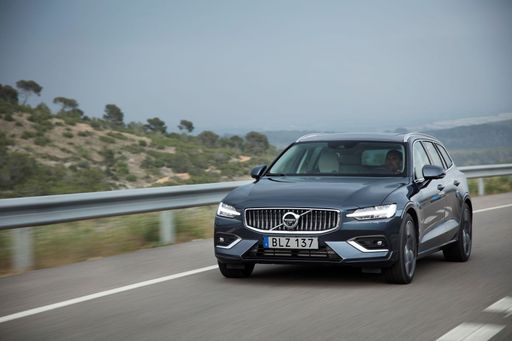 @ media.volvocars.com
@ media.volvocars.com
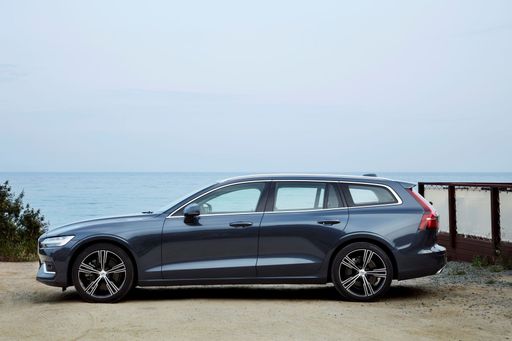 @ media.volvocars.com
@ media.volvocars.com
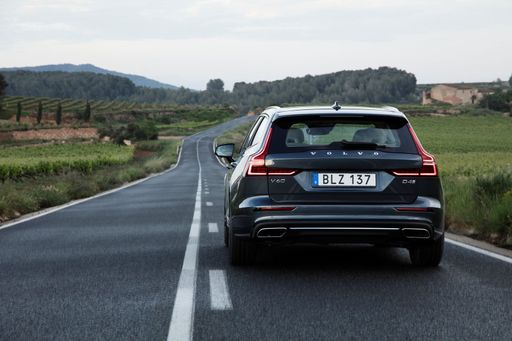 @ media.volvocars.com
@ media.volvocars.com
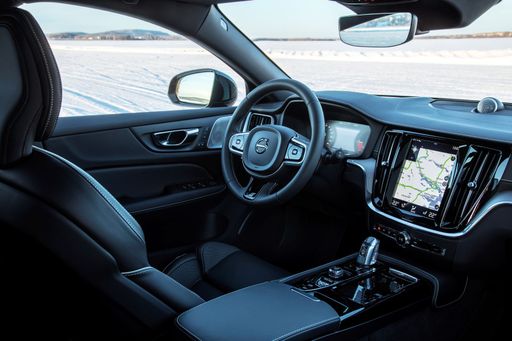 @ media.volvocars.com
@ media.volvocars.com
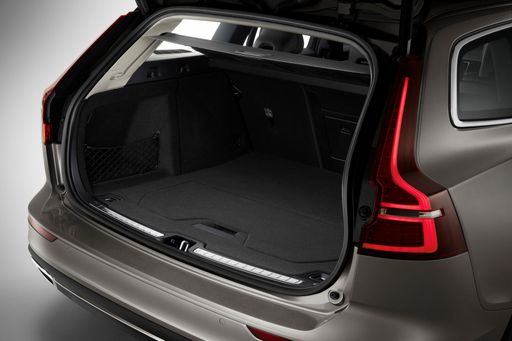 @ media.volvocars.com
@ media.volvocars.com
Nissan Interstar
The Nissan Interstar is a versatile van that expertly combines practicality with modern design. It offers a spacious interior that caters to both cargo and passenger needs, making it ideal for businesses and families alike. With its robust performance and efficient fuel consumption, the Interstar stands out as a reliable choice in the commercial vehicle market.
details

|
|
|
|
|
Costs and Consumption |
|
|---|---|
|
Price
41600 - 64200 £
|
Price
34900 - 55600 £
|
|
Consumption L/100km
2.4 - 6.2 L
|
Consumption L/100km
7.4 - 7.5 L
|
|
Consumption kWh/100km
-
|
Consumption kWh/100km
-
|
|
Electric Range
92 km
|
Electric Range
175 - 410 km
|
|
Battery Capacity
14.70 kWh
|
Battery Capacity
-
|
|
co2
54 - 140 g/km
|
co2
0 - 195 g/km
|
|
Fuel tank capacity
60 L
|
Fuel tank capacity
80 L
|
Dimensions and Body |
|
|---|---|
|
Body Type
Estate
|
Body Type
Cargo Van
|
|
Seats
5
|
Seats
3 - 7
|
|
Doors
5
|
Doors
4
|
|
Curb weight
1734 - 2064 kg
|
Curb weight
2053 - 2535 kg
|
|
Trunk capacity
519 L
|
Trunk capacity
-
|
|
Length
4778 mm
|
Length
5680 - 6315 mm
|
|
Width
1850 mm
|
Width
2080 mm
|
|
Height
1432 mm
|
Height
2498 - 2756 mm
|
|
Payload
466 - 506 kg
|
Payload
965 - 1447 kg
|
Engine and Performance |
|
|---|---|
|
Engine Type
Petrol MHEV, Plugin Hybrid
|
Engine Type
Diesel, Electric
|
|
Transmission
Automatic
|
Transmission
Manuel, Automatic
|
|
Transmission Detail
Dual-Clutch Automatic, Automatic Gearbox
|
Transmission Detail
Manual Gearbox, Automatic Gearbox, Reduction Gearbox
|
|
Drive Type
Front-Wheel Drive, All-Wheel Drive
|
Drive Type
Front-Wheel Drive
|
|
Power HP
197 - 455 HP
|
Power HP
105 - 170 HP
|
|
Acceleration 0-100km/h
4.6 - 7.6 s
|
Acceleration 0-100km/h
-
|
|
Max Speed
180 km/h
|
Max Speed
115 - 177 km/h
|
|
Torque
300 - 709 Nm
|
Torque
300 - 380 Nm
|
|
Number of Cylinders
4
|
Number of Cylinders
4
|
|
Power kW
145 - 335 kW
|
Power kW
77 - 125 kW
|
|
Engine capacity
1969 cm3
|
Engine capacity
1997 cm3
|
General |
|
|---|---|
|
Model Year
2024 - 2025
|
Model Year
2024 - 2025
|
|
CO2 Efficiency Class
E, B
|
CO2 Efficiency Class
G, A
|
|
Brand
Volvo
|
Brand
Nissan
|
Volvo V60
The Volvo V60: A Glimpse at Scandinavian Ingenuity
The Volvo V60 stands as a beacon of the brand's commitment to combining luxury, performance, and environmental mindfulness in a family-friendly estate car. Boasting sleek looks and equipped with an array of powertrains, the V60 doesn't just cater to traditional fossil fuel users but also offers advanced plug-in hybrid options, pushing the boundaries of modern automotive engineering.
Powertrain Perfusion: A Diverse Line-up
Under the bonnet of the Volvo V60, you'll find a versatile range of engines, from the efficient mild-hybrid units to the high-performing plug-in hybrids. The series offers power outputs ranging from 197 to an impressive 455 PS, ensuring that there is a model to suit every driving preference. The innovative use of mild-hybrid technology not only maximises fuel efficiency, with consumption figures as low as 6.2 L/100 km, but also reduces emissions, making it a forward-thinking choice for everyday journeys.
Innovative Plug-in Hybrids
Among the V60's standout offerings is the T8 Plug-In Hybrid version, which combines a petrol engine with an electric motor, delivering an imposing 455 PS with an astonishingly low consumption of just 0.7 L/100 km. This hybrid variant also features an electric-only range of up to 92 km, allowing drivers to enjoy zero-emissions driving, which is perfect for urban commutes. The implementation of a 14.7 kWh battery lies at the heart of its efficiency, showcasing Volvo's dedication to sustainable innovation.
Design and Dynamics
Volvo has always been known for its iconic design aesthetics, and the V60 is no exception. Its elegant and dynamic exterior is complemented by a meticulously crafted interior, packed with cutting-edge features that enhance comfort and connectivity. The well-appointed cabin is spacious enough to accommodate five passengers comfortably, offering a generous baggage capacity of 519 litres—perfect for family getaways or transporting everyday essentials.
Advanced Safety Features
Volvo's dedication to safety is enshrined in the V60, equipped with advanced technologies aimed at protecting all road users. From adaptive cruise control to lane-keeping assistance and driver alert control, the V60's comprehensive safety suite ensures peace of mind even in challenging driving conditions. Volvo's IntelliSafe technology acts as an additional co-pilot, helping to mitigate accidents before they occur.
A Statement on Sustainability
As part of Volvo's larger ambition towards sustainability, the V60 represents a critical step forward. With improved fuel efficiency and lower CO2 emissions ranging from 17 to 168 g/km, this model aligns with global efforts to combat climate change. The broad adoption of hybrids and advancements in electric driving capabilities underscore Volvo's strategy to become a leader in sustainable transportation solutions.
Conclusion: The Future of Versatile Driving
The Volvo V60 is more than just an estate car; it's a testament to the future of driving—a blend of style, performance, and ecological responsibility. With its array of configurations, including the revolutionary plug-in hybrids, the V60 provides an irresistible option for eco-conscious drivers who refuse to compromise on sophistication and driving pleasure. As the automotive industry evolves, Volvo's V60 firmly positions itself at the cutting edge, proving that luxury and sustainability can indeed go hand in hand.
Nissan Interstar
The Evolution of the Nissan Interstar
The Nissan Interstar has long been a staple in the commercial vehicle sector, known for its robust build and practical design. The latest iterations have further cemented its status with a range of technical enhancements and innovative features aimed at aiding businesses in achieving optimal efficiency. Whether you're navigating city streets or traversing the highways, the Interstar stands out as a reliable workhorse ready to meet various transport needs.
Power and Performance
The current range of Nissan Interstar models boasts diesel engines ranging from 105 to 180 PS, offering a commendable blend of power and fuel efficiency across the board. With a fuel consumption of between 7.4 and 7.5 litres per 100 kilometres, these vehicles are designed to minimise operational costs while maximizing performance.
All models feature four-cylinder engines, with engine displacement between 1997 and 2299 cm³, capable of producing torque figures between 330 and 400 Nm. These specifications ensure that the Interstar offers superior pulling power, which is particularly useful for transporting heavy loads across different terrains.
Transmission and Drive Options
Versatility is at the heart of the Nissan Interstar, with transmission options including both manual and automatic gearboxes. Drivers can also choose between front-wheel and rear-wheel drive configurations, allowing the vehicle to suit specific logistical requirements or personal preferences.
For those seeking simplicity and ease of use in urban environments, the Interstar with its automated gearshift provides a smooth driving experience, reducing driver fatigue and increasing focus on the road ahead.
Dimensions and Load Capacities
The Nissan Interstar is available in various lengths, from 5048 mm to an extensive 6848 mm, catering to diverse commercial needs. With widths ranging from 2070 mm to 2222 mm and heights from 2307 mm to 2808 mm, the Interstar offers multiple configurations to maximise cargo space and accommodate various loads.
With a maximum payload capacity of up to 1451 kg, businesses can rest assured that the Interstar is more than capable of delivering goods efficiently without compromising on safety or comfort.
Innovation and Technological Features
While functionality remains a priority, Nissan has not skimped on technological advancements. Among the innovations included are advanced safety features, such as anti-lock braking systems (ABS), electronic stability control (ESC), and a variety of sensors to assist with parking and reversing.
In terms of driver comfort, the brand offers multiple trim levels with exceptional interior features designed to enhance driver experience during long hauls. Options such as climate control, advanced navigation systems, and modern infotainment setups are available, ensuring that both driver and passenger remain comfortable and connected, regardless of the journey length.
Coachwork and Trim Options
The Interstar line-up provides a range of trim levels and equipment lines, from the entry-level Visia to the high-spec Tekna, catering to different market demands and individual preferences. The selection allows buyers to prioritise features that best suit their operation or driving style.
For example, the N-CONNECTA variant offers an array of added extras, enhancing both connectivity and comfort for drivers who rely on the vehicle as a mobile office.
Conclusion
The Nissan Interstar represents a harmonious blend of power, efficiency, and technological innovation in the large van segment. With its vast array of options and features, the Interstar is undeniably a top choice for businesses looking to invest in a dependable and adaptable commercial vehicle. As the line-up continues to evolve, the Interstar remains poised to meet the growing challenges and demands of the modern logistic landscape.
Which drive types are available for the Volvo V60?
Available as Front-Wheel Drive or All-Wheel Drive.
The prices and data displayed are estimates based on German list prices and may vary by country. This information is not legally binding.
